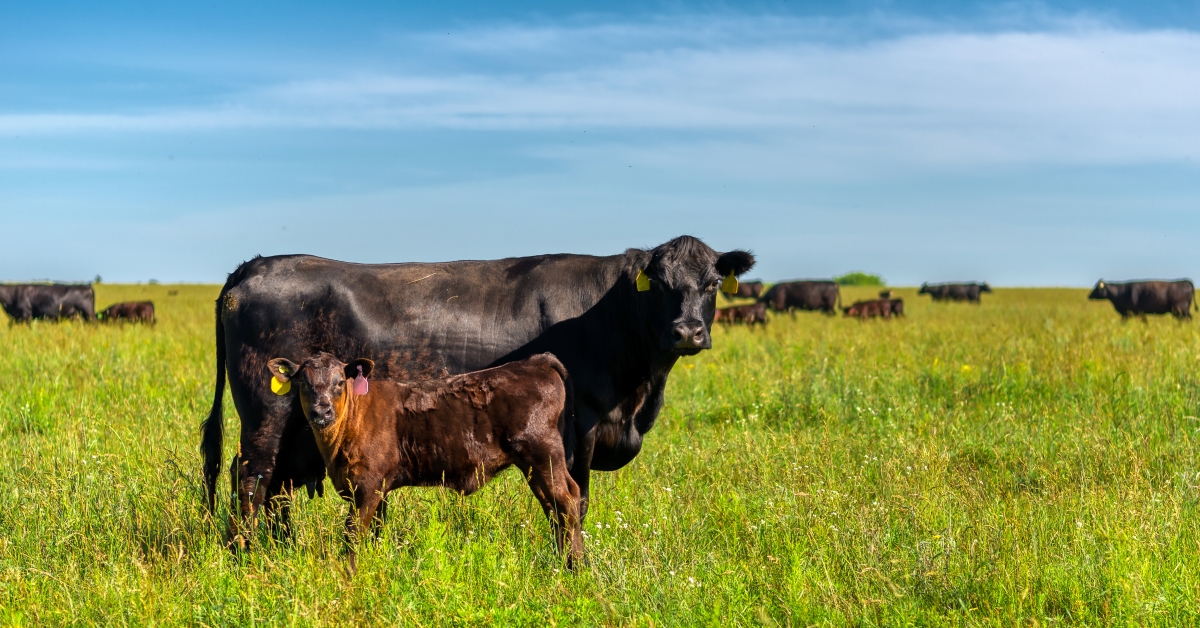Proper Nutrition to Prevent Illness

By Twig Marston, PhD, Hubbard Feeds. Reprinted with Permission.
Calving season can sometimes have the unexpected and costly consequence of down cows. Milk fever, winter/grass tetany and pregnancy toxemia are the three most common causes. All three are associated with poor or improper diets, which either do not provide minerals in the proper balance or do not supply adequate energy to maintain body condition. Additionally, factors like weather extremes (droughts, floods, temperature fluctuations, etc.) can cause dietary changes that can lead to down cows. Often these problems will happen just prior to or soon after calving, making it necessary to implement a preventive health program during the last trimester of pregnancy. Luckily, problems can be avoided by knowing the herd’s nutritional needs, including nutrient profiles of the major dietary components and the most effective supplement program needed to balance the diet. Good stewardship includes providing specific nutrients in adequate amounts to keep cows from becoming vulnerable to these nasty ailments.
Milk fever, or acute hypocalcemia, occurs when blood calcium levels fall below 1.6 mmol/L. This usually occurs within a few days of calving. Cows with milk fever show symptoms of muscular weakness, subnormal body temperature, increased heart rate, sternal recumbency and loss of consciousness. The primary reason cows go down is that they are not able to mobilize calcium from their bones to support lactation. For prevention, a mineral supplement properly fortified with calcium will make cows less dependent on bone calcium reserves. For treatment, calcium gluconate is administered, either intravenously or as a subcutaneous injection. This will usually resolve the problem if given during early onset of the condition. Later stages are difficult to reverse and may lead to death.
Hypomagnesimic tetany, also known as grass tetany or winter tetany, occurs due to magnesium deficiency. Cows older than four years of age are more susceptible to tetany when compared to younger cows. If tetany is suspected, blood samples can be evaluated to determine whether blood magnesium levels are low (0.65 mmol/L plasma). Symptoms may include nervousness, staggering and/or stiff gait, convulsions, muscle twitching, head thrown back, and paralysis.
Grass tetany occurs most frequently in the spring, during cool periods when grass is growing rapidly. The high potassium, high nitrogen, and low calcium content of lush grass can result in an imbalance. Tetany can also be seen in the fall when cool-season grasses, wheat pasture, and cover crops experience new, lush growth. Winter tetany is most likely to happen when cow diets are radically changed from low- to high-quality forage diets. A prime example of this is when cows are pulled off a heavily grazed crop residue field and immediately fed high-quality, harvested grass hay. Because legumes contain almost twice as much magnesium as grass, they are seldom a cause of tetany, but exceptions have existed.
Prevention depends largely on avoiding conditions that contribute to the disorder. If tetany has been an issue in the past, it may be worthwhile to have forage analyzed for mineral content. Forage testing will provide potassium, nitrogen (crude protein), and calcium levels, which can aid in selecting the proper mineral supplement routine needed to prevent tetany. Providing a highly palatable, magnesium-fortified mineral supplement is the first step of prevention. Salt is also important in helping transport magnesium into cells, so ensure that adequate salt is provided. Both avoiding grazing new grasses less than four to six inches tall and feeding alfalfa hay can help prevent tetany.
Pregnancy toxemia happens during the last trimester of pregnancy when the fetal energy demand is greater than the cow energy intake. It is often triggered by large or multiple fetuses, feeds low in energy and/or protein, and/or conditions that reduce a cow’s ability to consume enough feed to sustain herself and her pregnancy. Cows with rapid weight loss or near calving, and also in poor body condition, are most susceptible. Cows with this disorder have a poor prognosis for successful recovery. A diet that maintains cows in moderate body condition is the most successful prevention program
Accenting the ups and avoiding the downs is essential to managing a cow herd successfully. Alert producers will provide balanced cow diets as part of their pre-calving preventive health programs as well as helping cows maintain ideal body condition for both health and reproductive efficiency.